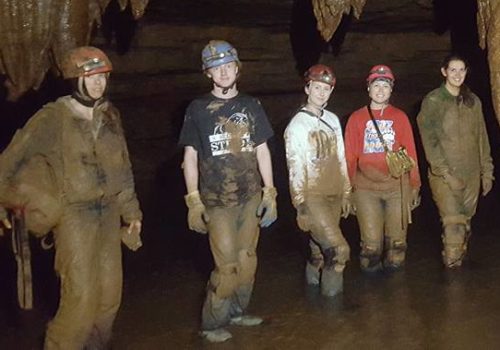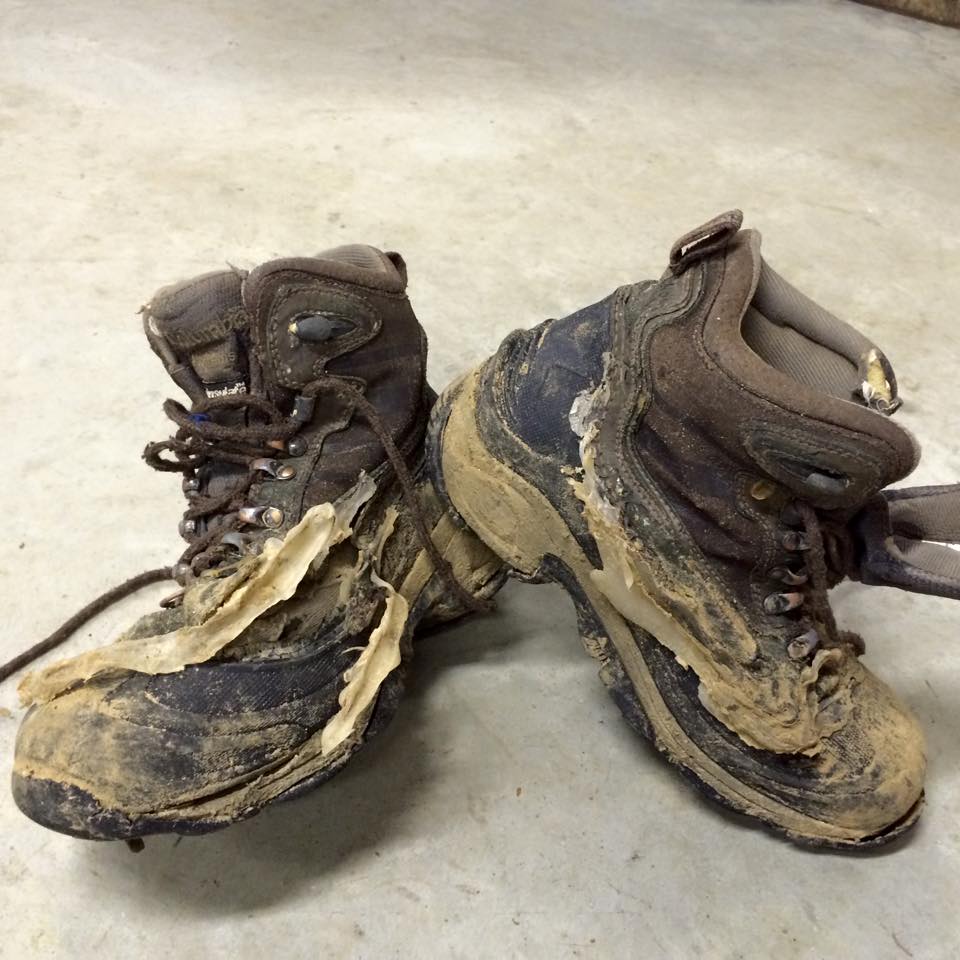
Caves are extreme environments; the rocks are hard, the water is cold, the mud is slippery, and the entrance is far. For these reasons we come equipped with special gear to ensure that we are prepared to travel safely.
Minimal Gear
This is what would be expected of a beginner caver on any easy to moderate level cave trip. Feel free to inquire about borrowing gear; the grotto owns several pieces of loaner gear for new people who aren’t ready to make their own purchase just yet. Ropes or climbing gear are never involved with any beginner trips.
Helmet
It’s important to protect your head from low hanging ceilings. For your first small trips any helmet with a chin strap will be fine; bicycle helmet, hard hat, climbing helmet.
Headlamp
Three sources of light is the rule for every caver. One of the lights must be a headlamp that can wrap around your helmet securely, even if only tape. Most hardware stores or super stores have a large selection of headlamps and flashlights. Take note of the lumens (200+) and battery life ratings when making comparisons to select the best one. headlights that run on 18650 batteries are popular among cavers.
Knee Pads
Knee pads can be purchased at most hardware stores or super stores. Avoid anything that is overly bulky or uses hard outer shells. Caving specific knee pads are available from every cave gear vendor.
Clothes
Clothing should be durable or disposable. Coveralls or jeans are a good choice. Avoid heavy insulation unless you are prone to getting cold easily. For wet caves, such as those with deep steams or pools, you will need to avoid wearing cotton because it does not insulate when wet. Stick with synthetic blends or wool. Consider bringing an extra long sleeve shirt with you on the trip too. Gloves are necessary. Cheap gardening gloves work fine.
Boots

Boots are a must. Good traction and ankle support is key to avoid injuries in the cave. Avoid shoes with hard soles or cleats. Rubber muck or cheap rain boots are popular.
Cave Pack
Avoid zippers, draw string or clasp bags hold up best. All cavers should have a small pack with at least the following items:
Snack or lunch depending on trip. high calorie foods are popular, tuna or chicken lunch kits, nuts and trail mix, meal bars and candy bars.
Water and sports drinks
Batteries for your lights and Extra Headlight
thick trash bag that fits over their body, a tea light candle and lighter for emergencies
Personal Medication
Others things you may want in your pack:
A small personal first aid kit is highly recommended.
Something to write on and with
flagging tape ( you can write on it or flag directions)
a hard case if you bring your phone to take pictures
20-25Ft 1 inch tubular webbing
Change of Clothes and a large trash Bag
You will be covered in mud when you get out of the cave. Bring extra clothes and trash bags if you don’t want your car seat to look the same.
Please be kind to those you carpooled with.
More Gear
Experienced cavers understand the value in high quality gear. Cavers typically wear helmets that are specific to climbing or caving, super bright headlamps (800+ Lumens), and knee pads that cover the all the way down to the ankles. Elbow pads are commonplace also. Cave packs would include additional items such as med kits, compass, emergency heat kits, webbing, and shovel. Cavers are gear heads and that’s part of the fun.